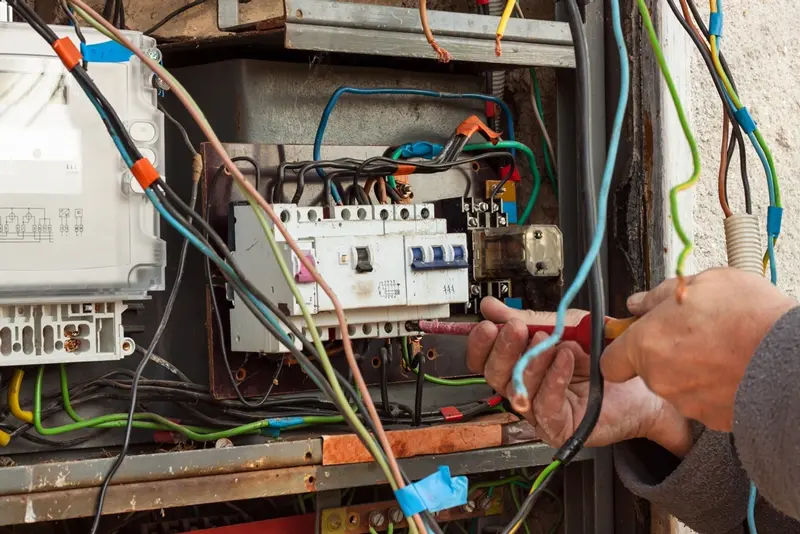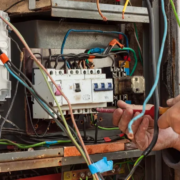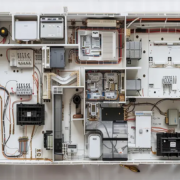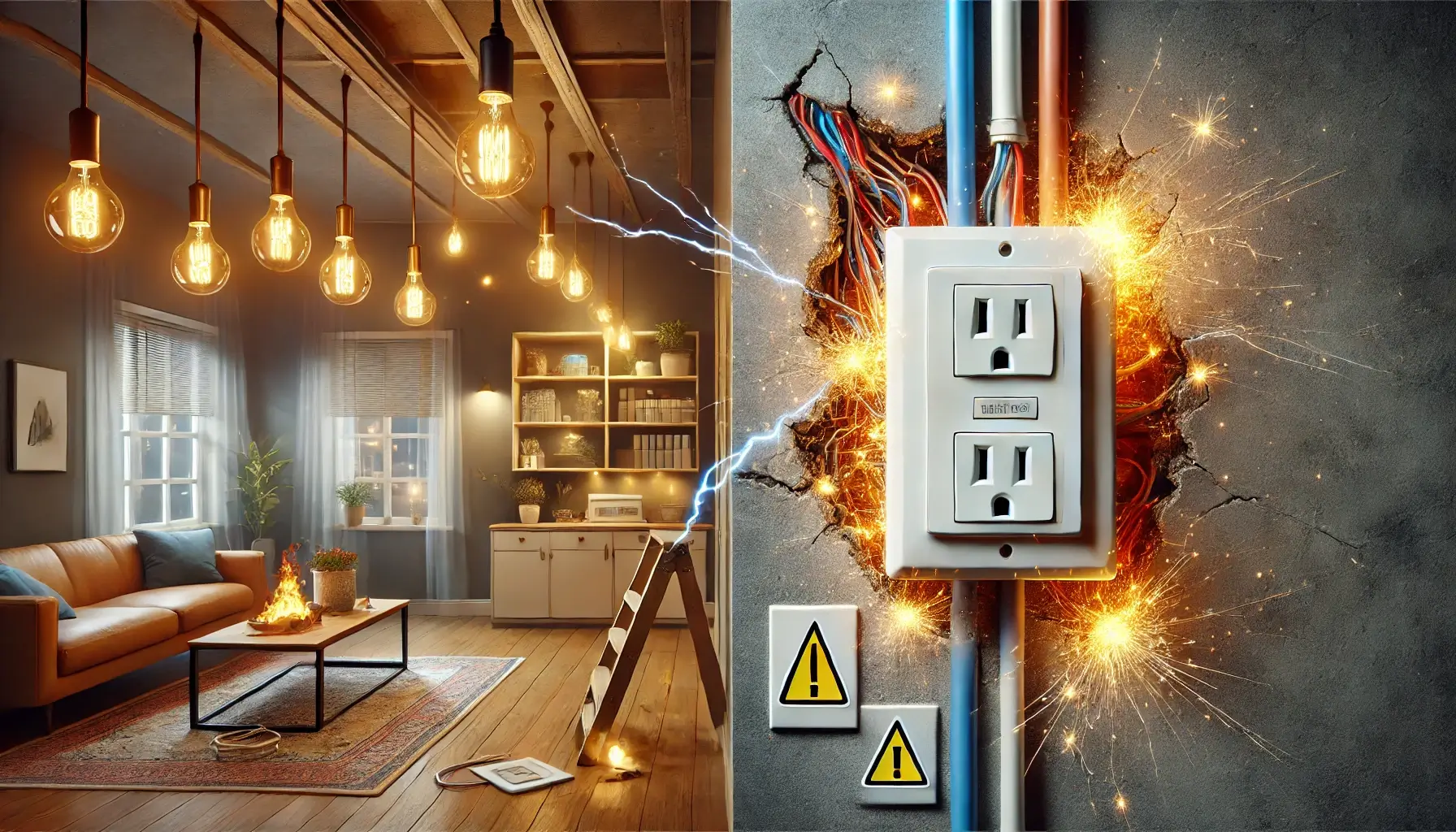How much does it cost to replace an electrical panel?

The average cost of replacing a panel varies between $1000 and $5000, including all additional costs. The exact price depends on the panel and other relevant component conditions. Now the question is, why replace a panel? According to research, all homes built after 2015 have 200-amp panels, while the houses built before 2015 have 100-150 amp panels, which don’t meet the recent energy requirements of the homes. So, when the panel doesn’t meet the energy needs or have any other issue, then you have to replace it with a new one. In this blog, I will explain cost to replace electrical box and all other relevant factors in detail. So, let’s start.
What is an Electric Panel?
An electric panel is a device that controls the flow of electricity from the grid to the circuits, breakers, and other appliances in your home. Traditional panels have fuses while new panels have breakers.
Functions of Electrical Panel
Following are the main functions of electric panel
Safety
Electric panels are the primary source of safety that regulates energy flow within your house. The circuit breakers or fuses in the panel protect each individual circuit and appliance from overload or shortage of material. When there is more supply from the grid than usual, the breaker drops, preventing further circuits from being destroyed due to overloading. So, panels organize the flow of energy and act as a safeguard for the whole home
Maintain the flow of Energy efficiently
Electric panels maintain the energy flow efficiently. Nowadays smart breakers are also available which maintain the flow of energy as per the usage of appliances need. If these breakers dnt work properly or there is any tear in the wires then there will be an overflow of energy which may cause fire eruption and high electricity bills.
When to Replace An Electric Panel?
The average life of panels varies between 25-40 years. However, they may stop working before their lifespan due to many issues. You must replace your panels when the panel performance becomes poor due to any reason. The following are the leading causes to replace a panel. The following are the main reasons that you must consider to change your panel.
- You have added any new appliance in your home and need a panel to meet the electricity requirement
- Your panels are outdated with old setups of fuses and dnt meet the recent energy regulations
- You have recently installed HVAC system at your home
- Your house is built before 2015 with an old panel system without latest breaker boxes
Signs of Outdated Electric Panel
Following are the main signs which indicate the poor performance of your electric panel and give you signs that you must consider replacing your panel.
- Frequent breakers dripping
- Regularly need to reset the circuits and breakers
- Flickering lights or dim lights
- Wheezing sounds from the fires
- Unusual sparks from the switches
- Appliances not receiving enough energy
Cost to Replace an Electrical Panel
The average cost to replace a panel varies between $250 and $400. This is the cost of the panel only. Labor charges, permit fees, and many other factors add up, and the final cost varies from project to project. The estimate for the electrical labor cost varies between $1000 and $3000. If you want to go with smart panels, which help to optimize energy usage and reduce electricity bills, you must have a higher budget between $2000 and $5000.
Factors Affecting the Electrical Panel Box Replacement Cost
There are many factors which affect the cost of the panels. Here, we will discuss the main factors.

1. Panel Size
Panel size is the main factor. Older homes have 60-100 amp panels and they don’t meet the new energy requirements. So, they have to upgrade their system to 200 amp or more as per their needs. Usually the panel size ranges from 60-400 amp and we have compiled price data for all panel upgradations.
Upgradation from the old to a new Panel Size |
Panel Price |
Total Cost (Panel Price + Installation) |
| From 60 to 100 amp | $100-$200 | $800–$1,500 |
| From 150- 200 amp | $250–$350 | $1,300–$3,000 |
| From 250-300 amp | $350–$500 | $1,800–$3,500 |
| From 300- 400 amp | $500+ | $2,000–$4,000 |
These are the prices of upgrading old panels with the newer ones by making some amendments. Now, following table mentions the cost for the installation of a new electric panel of various sizes.
Installation of New Panel
|
2. Panel Parts
Sometimes, you just need to replace a part of the panel to upgrade it. There are two main parts of a breaker
- Sub panel
- Circuit breaker box
– Sub Panel
Sub panels are installed to avoid the unnecessary spreading of wires. So, they are installed at a place where they are used. The electricity is supplied from the main panel to the sub panel and then to the circuit and appliances. They do not require more energy to operate. Sub panels are of different sizes and cost varies depending upon the size.
- 50 amp sub panels cost you anywhere between $400-$1000
- 1000 amp cost ranges between $500-$12000.
- 150 amp sub panel cost range is $600-$1750
– Circuit Breaker
Circuit breakers are also of different sizes and each breaker has different cost than the other. Following is a brief table about the cost to replace breaker box as per their size.
Breaker Size |
Cost |
| 15 amp | 7-9$ |
| 20 amp | 8-9$ |
| 30 amp | 17-18$ |
| 50 | 120-140$ |
3. Labor Cost
Labor cost is another factor that impacts the final budget for replacing a panel. The electrician charges $50-100$ per hour. However, if you need an experienced electrician from a renowned firm, then the budget must be high.
4. Location
Location also has a huge impact on total budgeting for the panel costs. Some states have higher fees and strict regulations for approval, such as California, while some states have affordable permit charges with relaxing regulatory codes, such as Texas.
5. Wiring Condition
The wiring of the home is also a major factor contributing to the final budget. If your wiring is in poor condition and you replace only the panel, it will be of no use. So, wiring is also necessary so that your panel works effectively and secures your home from electrical fires. The cost for the new electrical wiring is $600-$2300.
6. Electric Meter Box
The electric meter box measures your home’s energy usage. It is usually installed by the utility company. At the time of electric panel replacement, new meter box is necessary that matches with the power of panel. The electrical box replacement cost or meter box replacement costs $50-$250, while the installation costs range between $1800 and $3500.
7. Moving the Electric Panel
Sometimes, residents have to move the electric panel to a new location due to new regulations in the area. Moving the panels along 10 feet costs $800-$1000, and moving the electric panel over a long distance may range between $1000 and $3000.
8. Cost for Indoor And Outdoor Electric Panels
The cost to install the panel indoors and outdoors remains the same, at $1000-$3000.
9. Replacing a Fuse With a Breaker
As we mentioned earlier, fuses were present in traditional panels, and if you want to replace them with new breakers, it will cost almost the same as the installation of the newer one, e.g., $1200-$4500.
Is the Panel Worth Replacing: What to Consider?
When you plan to replace your panel, it is essential to consider whether this replacement is worth investing in. Will this be beneficial for your home? The following are the points that you must consider when planning to replace your electrical panels.
- The panel size must be accurate according to your home’s energy needs so that it can supply enough energy to all appliances, subpanels, and circuits.
- It must be of good quality, and the panels must be purchased from good vendors in the market.
- Install from an expert electrician because errors during installation can also reduce the panels’ lifespan.
If you want all the above-mentioned points handled by one platform, then you must not hesitate to use our electrical estimating services.
DIY or Experienced Electrician for Panel Replacement?

Well, both options are good. If you have electrical expertise, you can go with the DIY option, but we advise you to choose an expert electrician over DIY. Professional electricians have expertise in handling emergency situations, know the recent regulatory codes, and can get early approvals by fulfilling all conditions. Further, they can better guide you about your circuits, wiring, and other necessary components.
How to Choose A Cost-Effective Electrician?
Many electrician offer their services in different municipalities of different states. Choosing the best one within budget with quality services is a challenging task. We advise you to select a local electrician because he knows all the electrical regulatory codes and the best vendors in your area, and can purchase the best panels from reliable resources. The following are a few tips for choosing a budget-friendly electrician.
- Get quotes from different electricians and finalize the one after a detailed meeting
- Ask them about their previous portfolio
- Check the previous customer reviews on the BBB page
- Tell them about your requirements and ask them about their deliverables
- Write all clauses on a page and get them signed by both parties.
Tips to Reduce the Electric Panel Upgradation/Installation Cost
- Always calculate your daily energy needs and purchase the right-sized panel for your home.
- Get quotes from different electricians and always choose the one with an affordable quote without compromising the quality of work.
- Purchase all materials such as breakers, wires, and circuits from reliable sources, and prefer investing in long-term plans instead of saving money for a short time.
Get the Best Electrical Estimates
If you need accurate electrical estimates for panel installation or upgrade, you can contact our electrical estimating company. We have a professional team who work with dedication to provide you with detailed cost breakdowns for both new electrical panel installations and upgrades of older ones. So, please book a meeting with one of our experts right now
Frequently Asked Questions













































